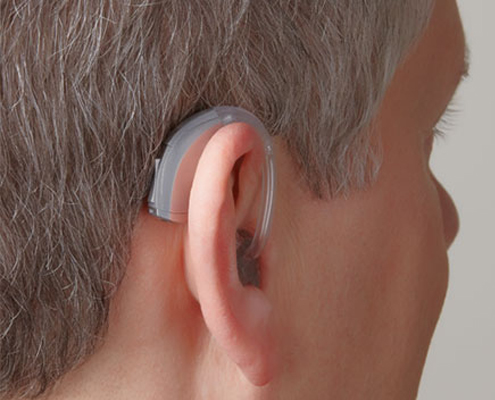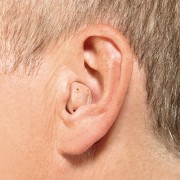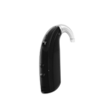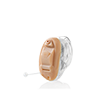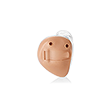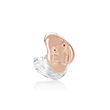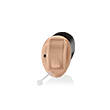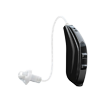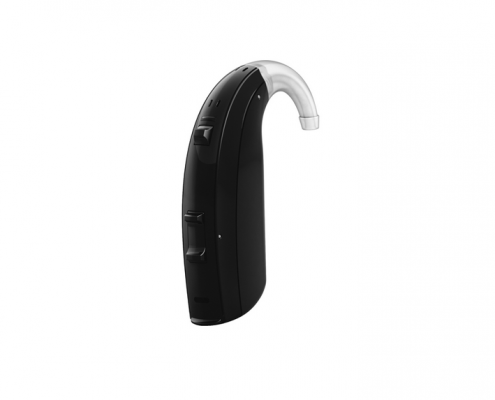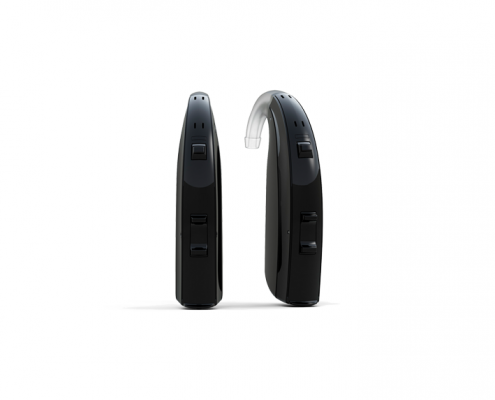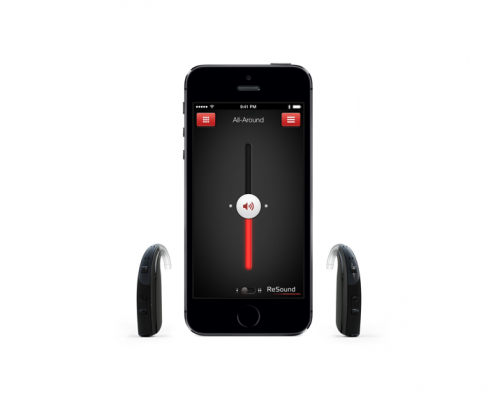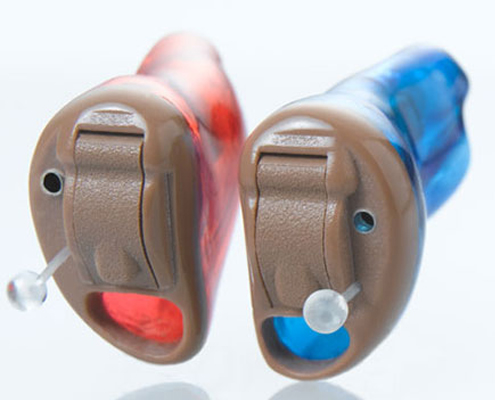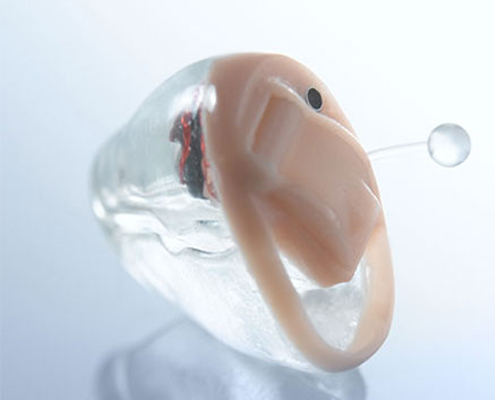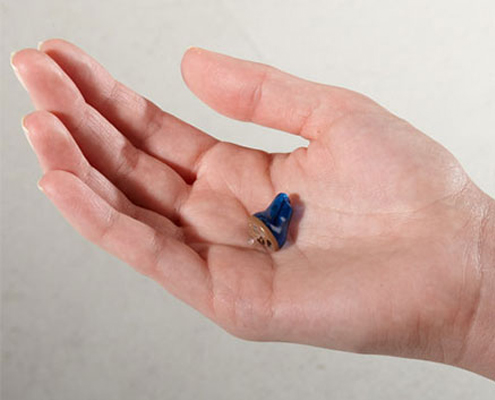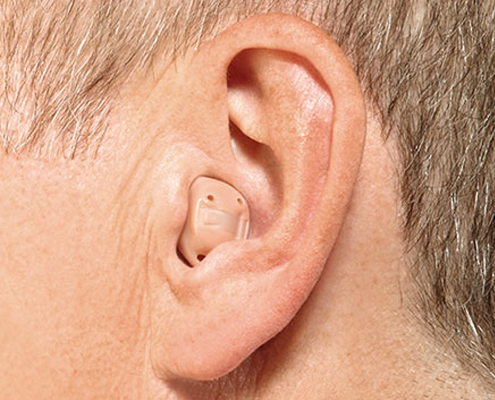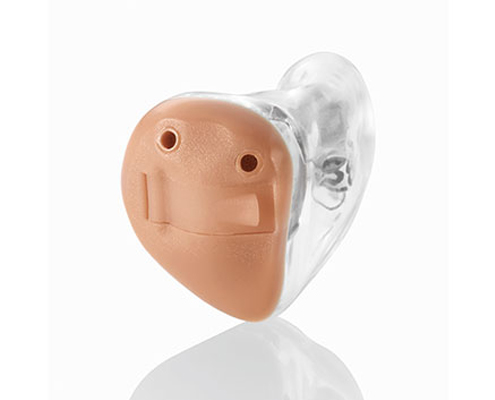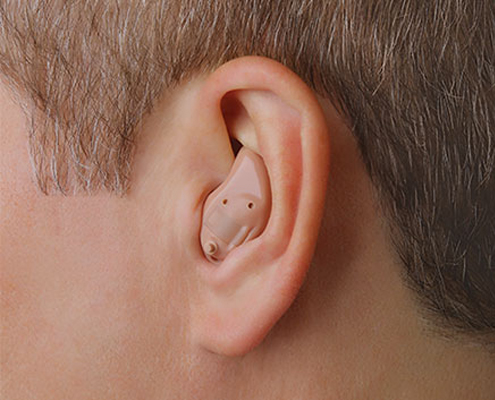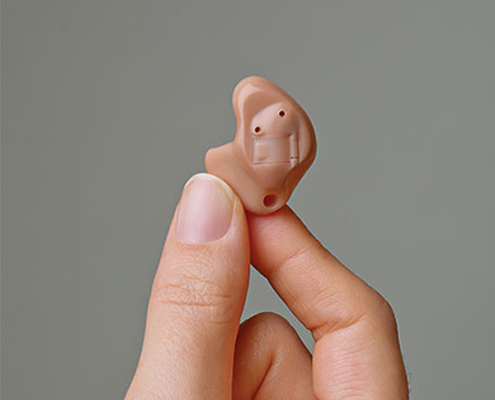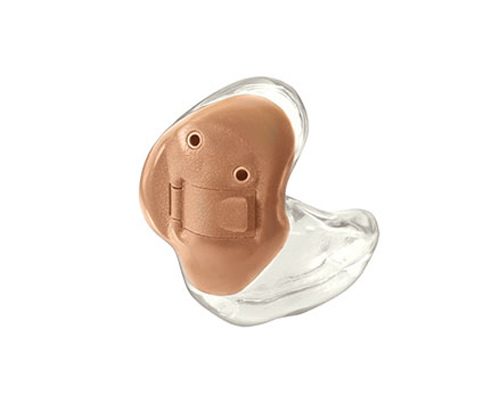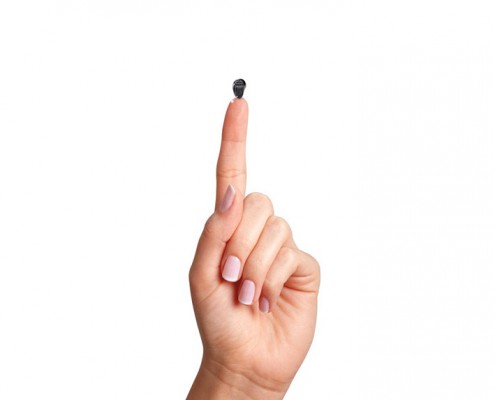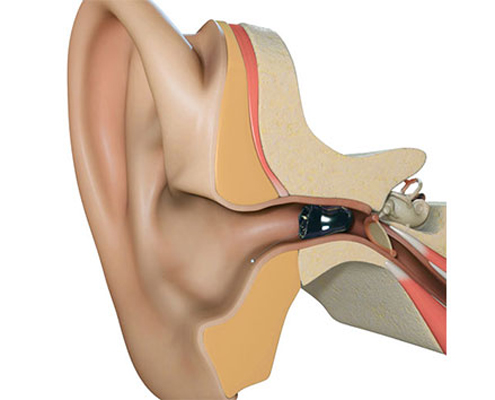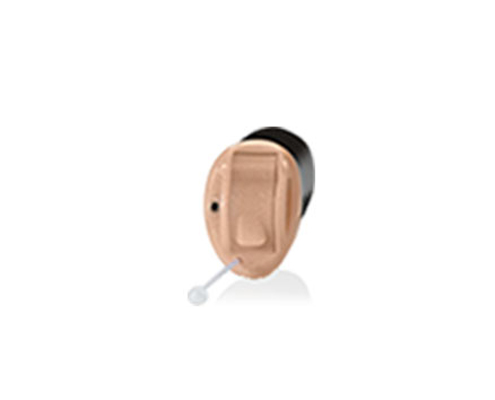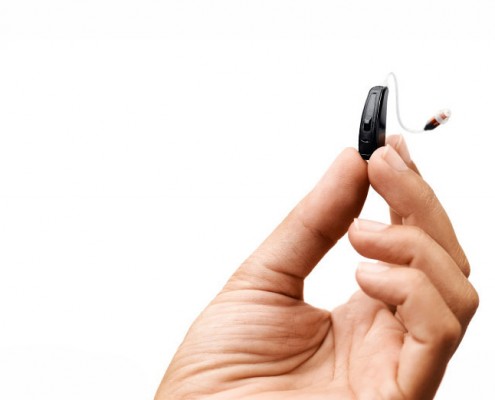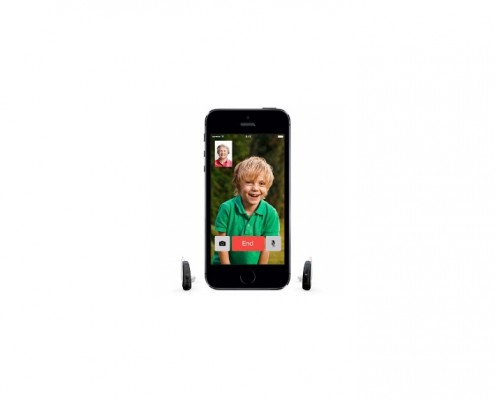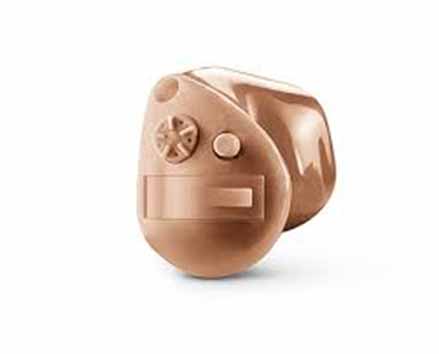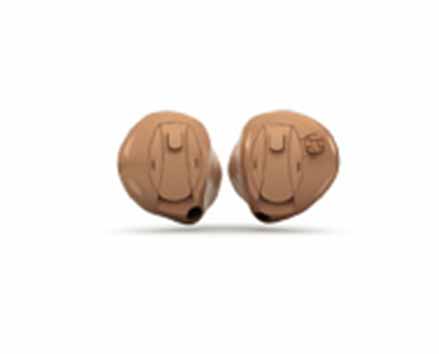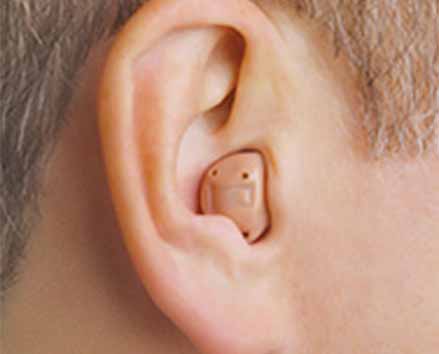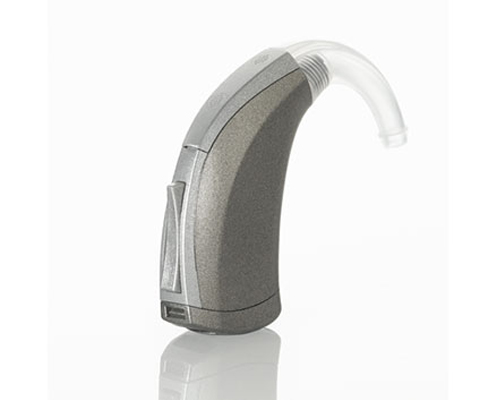behind the ear
A behind-the-ear (BTE) hearing aid hooks over the top of your ear and rests behind the ear. A tube connects the hearing aid to a custom earpiece called an earmold that fits in your ear canal. This type is appropriate for people of all ages and those with almost any type of hearing loss.
a behind-the-ear hearing aid:
- Traditionally has been the largest type of hearing aid, though some newer mini designs are
streamlined and barely visible - Is capable of more amplification than are other styles
- May pick up more wind noise than other styles
completely in canal or mini CIC
A completely-in-the-canal hearing aid is moulded to fit inside your ear canal. It improves mild to moderate hearing loss in adults.
a completely-in-the-canal hearing aid:
- Is the smallest and least visible type
- Is less likely to pick up wind noise
- Uses very small batteries, which have shorter life and can be difficult to handle
- Doesn’t contain extra features, such as volume control or a directional microphone
- Is susceptible to earwax clogging the speaker
in the canal
An in-the-canal (ITC) hearing aid is custom moulded and fits partly in the ear canal. This style can improve mild to moderate hearing loss in adults.
an in-the-canal hearing aid:
- Is less visible in the ear than larger styles
- Includes features that won’t fit on completely-in-the-canal aids, but may be difficult to
adjust due to its small size - Is susceptible to earwax clogging the speaker
in the ear
An in-the-ear (ITE) hearing aid is custom made in two styles — one that fills most of the bowl-shaped area of your outer ear (full shell) and one that fills only the lower part (half shell). Both are helpful for people with mild to severe hearing loss.
features
- Includes features that don’t fit on smaller style hearing aids, such as a volume control
- May be easier to handle
- Uses a larger battery for longer battery life
- Is susceptible to earwax clogging the speaker
- May pick up more wind noise than smaller devices
- Is more visible in the ear than smaller devices
invisible canal
Its tiny size and slightly deeper position in the ear canal, means that the mini-canal hearing aid is invisible and so comfortable you’ll almost forget you’re wearing one.
receiver in canal or receiver in the ear
The receiver-in-canal (RIC) and receiver-in-the-ear (RITE) styles are similar to a behind- the-ear hearing aid with the speaker or receiver in the canal or in the ear. A tiny wire, rather than tubing, connects the pieces.
A receiver-in-canal hearing aid:
- Has a less visible behind-the-ear portion
- Is susceptible to earwax clogging the speaker
half shell
Because of their size, half-shell hearing aids can have larger sound amplifiers and more features, like a telephone switch or second microphone.

